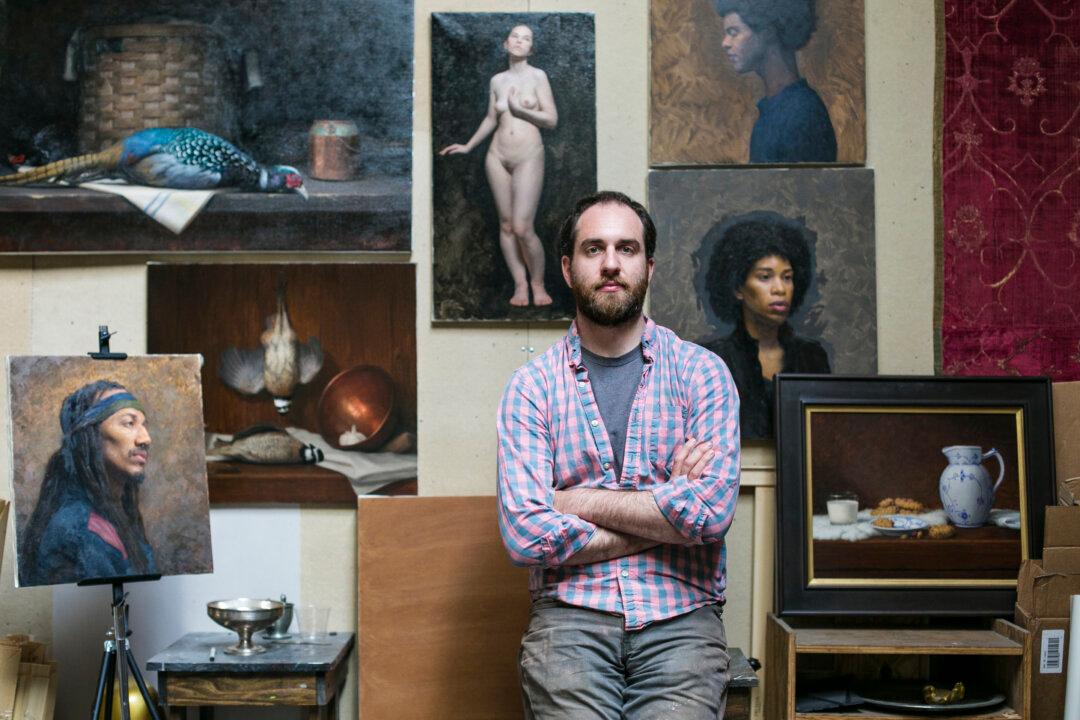NEW YORK—Brendan Johnston likes to keep his artistic choices open and varied, yet steady. The young artist has calibrated his internal compass to keep him on course in the artistic tradition of the old masters, and yet he’s perfectly at ease with not knowing yet exactly how he wants to distinguish himself. His confidence rests in the search, in little discoveries, in that stirring process of refinement toward mastery.
“How do you treat contours? Do you create a sense of more movement in the figure by having multiple undecided contours, or do you decide on a finished one?“ he asked rhetorically. ”In one portrait I might want to do a very tightly rendered profile with a precise line. Maybe it’s the model who inspires that. Or I might want to do one that is more structurally based with a little bit more of a Russian influence, and then I might try to do something in the middle,” Johnston said.






